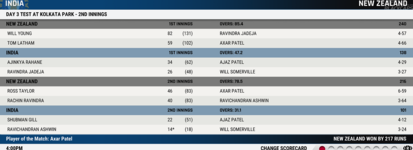sdt16
Associate Captain
- Joined
- Feb 13, 2012
- Location
- Mumbai
- Profile Flag
- India
- Online Cricket Games Owned
- Don Bradman Cricket 14 - Steam PC
@Rumple43 Thanx a lot for patiently addressing my Qs...Will keep in mind all that you have pointed out...Thanks for the kind words, much appreciated!
To answer your questions where I can:
1 - I put some visual speed numbers out for all pitches after that patch, rather than putting out a whole new spreadsheet, tho these numbers will be incorporated into V4. You can find them here: https://www.planetcricket.org/forum...in-80-pitch-sliders-again.118092/post-3522533
2 - Unsure on weather impacting pitches. I didn't see anything conclusive when I tested it, but maybe the optimist in me wants to say hotter weather makes a pitch wear quicker. I'd say just go with whatever weather you fancy, tho my post on testing is here: https://www.planetcricket.org/forum...in-80-pitch-sliders-again.118092/post-3517521
3 - Those settings have an impact, and are mentioned a bit in the pitch wear post linked above. In short, the more cracks you start with, the more bowler friendly the pitch will be. The higher the pitch wear speed, the faster the pitch will deteriorate and become bowler friendly, so just match those settings up to what you're trying to achieve. Batters paradise, no cracks, slow wear. Seamer heaven, heavy cracks, fast wear. From my findings, cracks only have a visual impact on seam movement, though there could be other factors that can't be seen (the pitch wear post covers this)
4 - You can. I've still been using my reskilled players, though I've turned the AI power from 4 to 6. I've added an extra 20 to my AI run rate (from 25 to 45, I believe, though anything around 50 should be fine), and I'm enjoying the limited time I've played. I'd keep other AI sliders, wicket chance and striker timing, the same as the spreadsheet rather than default, but RR can now be around 50 regardless of reskilled or normal players.
5 - I've not really played white ball cricket I'm afraid, tho I did have a very quick dabble. There's a T20 set mentioned as part of the first post of this thread, tho the slider figures could be way off so be warned. Others in the main thread have discussed white ball slider values, so maybe ask there.
6 - Unsure on the limit, but I've got about 10 or 12 at present. I've got the base sliders for each pitch from v3, then a few specific testing set ups as well.
In terms of home/away and pitch variables, I have a set I call "Current". What I do is to load up the spreadsheet while looking at my PS4, plug in whatever sliders I'll need for my next match into that "current" pre set, then play my game using them. Then for the match after I'll do the same thing, editing the "current" preset again to something different. That way I'm just altering the values of one preset to what modifiers I want for my next test, rather than trying to create loads of presets for every variation that I may never even use.
Looking forward to your V4 spreadsheet behind which lies your continuous deep research and testing
Cheers and Thanx mate!!













